The Best Shoes for Kids with Hypermobility – Extra Arch and Ankle Support!
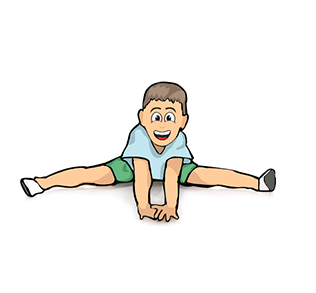
Has your child been diagnosed with hypermobility (HJS)? This condition is also referred to as “loose joints” and can cause foot, leg, and lower back pain as well as discomfort after exercising or having an active day. The feet are the most significantly affected area for hypermobile children, due to their complex mixture of bones and soft tissues. This condition only becomes a problem when it’s symptomatic. I am going to show you a list of the best shoes to help treat hypermobility based on my many years of shoe fitting experience.
Most medical professionals are hesitant to diagnose a child with hypermobility unless the child starts complaining about joint pain or fatigue. Taking early action is crucial to help treat this condition because something so simple such as providing your child with the correct pair of shoes can make a world of difference.
If you have a child with hypermobility you will have limited options on the type of shoes your child can wear, since the shoes must provide targeted arch and ankle support. There are only certain shoes that help treat hypermobility, but the good news is that I will help you find them.
I know exactly which shoes these are from having fitted them before. I have been working for a specialized children’s shoe store for over 10 years now. The correct type of shoes is not only going to help improve your child’s posture, but they will also help decrease your child’s fatigue.
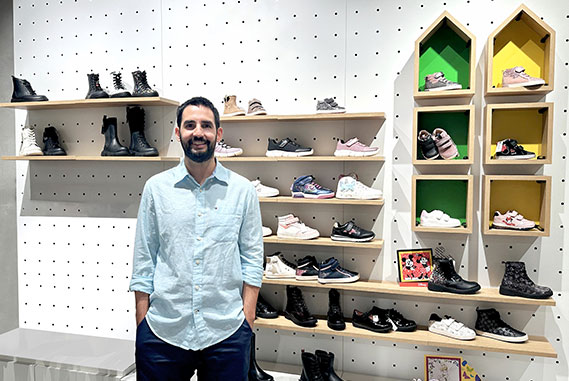
Pro Tip: If you’re pressed for time here is a list of the best shoes for hypermobility.
Should Children with Hypermobility Walk Barefoot?
I want to clarify that walking barefoot is not recommended for children with hypermobility. Children who have this condition have a harder time balancing, and when they go barefoot their over-used muscle groups are further over-used, which often leads to foot, leg, and back pain.
Hypermobile children should not be told to take their shoes off at their daycare or school, since their physical capabilities will be impaired. Would you ask a child who wears glasses to take them off while performing a physical task?
Once hypermobile children are fitted in the correct pair of shoes, their balance and posture usually improve considerably.
Do More Expensive Shoes Automatically Translate Into Better Shoes for Your Child?
I want to point out that higher-priced shoes don’t automatically translate into better shoes for your child. You might buy an expensive shoe assuming that it will be more effective in improving your child’s posture or walking gait, while in reality, it might make the condition worse.
On the other hand, you can pay a small amount for a shoe and it might actually enhance your child’s walking gait. This is where I came into play since I know which shoes have proven to be the most effective ones in treating children with hypermobility.
The cost and the brand of the shoes are not relevant factors. Within brands, you will find shoe styles that vary considerably in characteristics. Even among the same shoe brands, certain styles provide better support than others.
Effective Ways to Help Treat Your Child’s Hypermobility
To treat your child’s hypermobility, you will need to help your child maintain good posture. This can be accomplished through exercises, but the correct type of shoes and orthotics are the most effective ways to improve your child’s overall posture. Providing your child with supportive shoes is an absolute must.
Kids are considered hypermobile if their joints move beyond the normal range of motion. The other two terms to refer to hypermobility are “loose-jointed” or “double-jointed”. It’s estimated that 10-15% of children have it. To help treat hypermobility you will need to improve your child’s muscle tone and muscle strength.
The 3 most effective ways to help treat your child’s hypermobility are:
1️⃣ Exercises
2️⃣ Supportive Shoes
3️⃣ Orthotics
Children with hypermobility are more prone to experiencing foot and leg pain, as well as developing poor posture habits. Certain shoes provide targeted support in the arch and ankle, which helps strengthen and straighten your kids’ feet and legs.
What a Difference the Correct Pair of Shoes Can Make!
Hypermobile children are likely to have impaired joint position sense, weak and rolled ankles, as well as flat feet. Take a look at the image below, does it look familiar? Do you notice how the child’s feet are collapsing and the ankles are rolling inwards?
Before Image
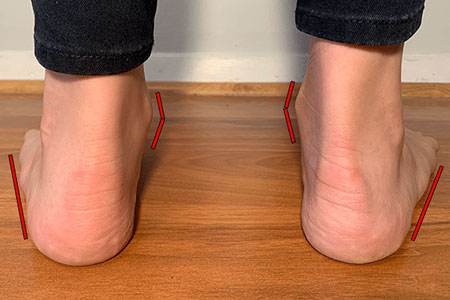
Now let’s take a look at an image of the same child wearing a pair of supportive shoes. Do you notice how the child’s feet are not collapsing anymore? The substantial outsole of the shoes and the firm heel counter are aligning the child’s feet. These are the type of shoes I will recommend shortly.
After Image
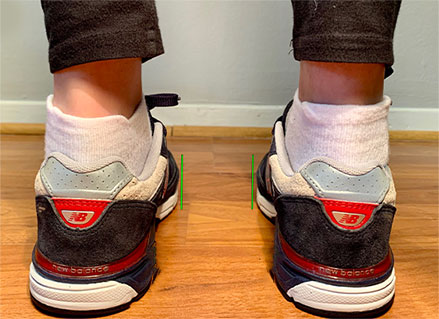
What Makes the Shoes that I Recommend Effective for Treating Hypermobility?
Your children’s shoes must provide the correct amount of support and they must also fit properly. These are the 3 key features that the shoes I recommend provide that make them the most effective ones for treating hypermobility and preventing foot and leg pain:
1️⃣ Ankle/Heel Support: Shoes that provide targeted ankle support help prevent your child’s ankles from rolling inwards/outwards. In addition, shoes that provide good ankle support help minimize the impact that your kids’ ankles take when they come in contact with the ground. This helps significantly reduce or fully eliminate your child’s ankle pain.

2️⃣ Arch Support: This feature helps prevent your child’s feet from collapsing, improving your child’s overall posture by helping your child walk and run straighter.
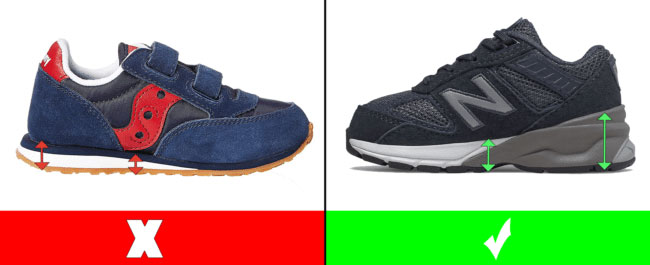
3️⃣ Lightweight/Flexible: While we want the shoes to be supportive, we also need them to be lightweight and flexible at the same time. This will prevent your child’s feet and legs from easily getting tired.
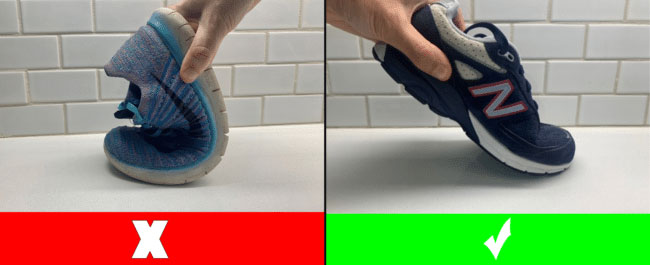
Now that you know what features the shoes I recommend provide you are ready to take a look at a selection of the best shoes for kids with hypermobility.
Keep in mind that I only review shoes that I have fitted before, as that is the only way for me to be able to tell how well-made they are, the amount of support that they provide and how they fit. Disclosure: Some links in this post may be affiliate links and we may receive a small commission (at no extra cost to you) when you click our links and make purchases.
The Best Shoes for Kids with Hypermobility
Below you can find a selection of the best shoes for kids with hypermobility. These shoes are capable of fitting children with narrow, medium, wide, and extra wide feet.
- The New Balance shoe style 990V6 is available for toddlers, little, and big kids
- Available in laces and velcro
- Fits children with medium, wide, or extra wide feet
- Suede/mesh upper provides durability and breathability
- Order this shoe half a size larger than your toddler’s current foot size
- The New Balance shoe style 990V6 is available for toddlers, little, and big kids
- Available in laces and velcro
- Fits children with medium, wide, or extra wide feet
- Synthetic/mesh upper provides durability and breathability
- Order this shoe half a size larger than your toddler’s current foot size
- The Stride Rite shoe style Elliot is available for toddlers
- Lace-up closure
- Fits toddlers with medium, wide, or extra wide feet
- 100% leather made
- Order this shoe half a size larger than your toddler’s current foot size
- The Stride Rite shoe style Emilia is available for toddlers
- Lace-up closure
- Fits toddlers with medium, wide, or extra wide feet
- 100% leather made
- Order this shoe a whole size larger than your toddler’s current foot size
- The Timberland shoe style Tracks is available for toddlers
- Double velcro straps
- Fits toddlers with medium or wide feet
- Water-friendly
- Order this shoe a whole size larger than your toddler’s current foot size
- The New Balance shoe style 574 is available for toddlers
- Available in velcro and laces
- Fits children with medium, wide, or extra wide feet
- Synthetic/mesh upper provides durability and breathability
- Order this shoe a whole size larger than your toddler’s current foot size
- The New Balance shoe style 990V6 is available for toddlers, little, and big kids
- Available in velcro and laces
- Fits children with medium, wide, or extra wide feet
- Synthetic/mesh upper provides durability and breathability
- Order this shoe a half size larger than your toddler’s current foot size
- The Memo shoe style Gabi is available for toddlers and little kids
- Double velcro straps
- Fits children with medium or wide feet
- Genuine leather and breathable mesh
- Thermoplastic asymmetric stiff heel counter for proper feet protection and stabilization
- Order this shoe half a size larger than your toddler’s current foot size
- The Memo shoe style Gabi is available for toddlers and little kids
- Double velcro straps
- Fits children with medium or wide feet
- Genuine leather and breathable mesh
- Thermoplastic asymmetric stiff heel counter for proper feet protection and stabilization
- Order this shoe half a size larger than your toddler’s current foot size
- The Saucony shoe style Cohesion is available for toddlers
- Velcro closure
- Fits toddlers with medium or wide feet
- Heel grid system for stable cushioning
- Compression molded EVA footbed for comfort
- Order this shoe a whole size larger than your toddler’s current foot size
- The Timberland shoe style Bootie fits toddlers and little kids
- Double velcro straps
- Fits children with medium or wide feet
- Padded collar for a comfortable fit around the ankle
- Water-friendly
- Order this shoe a whole size larger than your toddler’s current foot size
- The Memo shoe style Princessa fits toddlers and little kids
- Double velcro straps
- Fits children with medium or wide feet
- This is an ORTHOPEDIC shoe
- Rigid heel counter
- Order this shoe half a size larger than your toddler’s current foot size
- The Saucony shoe style Cohesion KDZ is available for little and big kids
- Velcro closure
- Fits children with medium and wide feet
- Heel grid system for stable cushioning
- Compression molded EVA footbed for comfort
- Order this shoe a half size larger than your child’s current foot size
- The Saucony shoe style Cohesion KDZ is available for little and big kids
- Velcro closure
- Fits children with medium and wide feet
- Synthetic and mesh upper
- Heel grid system for stable cushioning
- Order this shoe half a size larger than your child’s current foot size
- The New Balance shoe style Fresh Foam 650 is available for little and big kids
- Fits children with medium, wide, or extra wide feet
- Velcro closure
- ABZORB midsole absorbs impact through a combination of cushioning and compression resistance
- Mesh upper material features no-sew overlays for a sleek fit and feel
- Order this shoe half a size larger than your child’s current foot size
- The New Balance shoe style Fresh Foam Arishi v4 is available for little and big kids
- Fits children with medium, wide, or extra wide feet
- Velcro closure
- ABZORB midsole absorbs impact through a combination of cushioning and compression resistance
- Mesh upper material features no-sew overlays for a sleek fit and feel
- Order this shoe half a size larger than your child’s current foot size
- The New Balance shoe style 2002 is available for toddlers and little kids
- Available in laces
- Fits children with medium and wide feet
- Suede/mesh upper provides durability and breathability
- Order this shoe half a size larger than your toddler’s current foot size
- The New Balance shoe style 2002 is available for toddlers and little kids
- Available in laces
- Fits children with medium and wide feet
- Suede/mesh upper provides durability and breathability
- Order this shoe half a size larger than your toddler’s current foot size
- The New Balance shoe style Fresh Foam 650 is available for little and big kids
- Fits children with medium, wide, or extra wide feet
- Velcro closure
- Synthetic and engineered mesh upper
- Fresh Foam midsole cushioning is precision engineered to deliver an ultra-cushioned, lightweight ride
- Order this shoe a half size larger than your child’s current foot size
- The Memo shoe style Polo is available for little and big kids
- Triple velcro straps
- Fits children with medium or wide feet
- This is an orthopedic shoe
- Thermoplastic rigid heel counter
- Order this shoe a half size larger than your child’s current foot size
- The Memo shoe style Chicago is available for little and big kids
- Triple velcro straps
- Fits children with medium or wide feet
- This is an orthopedic shoe
- Thermoplastic rigid heel counter
- Order this shoe a half size larger than your child’s current foot size
- The New Balance shoe style Coco is available for little and big kids
- Lace-up closure
- Fits children with medium or wide feet
- NDurance rubber outsole technology provides superior durability in high-wear areas to help get more out of the shoes
- Order this shoe a half size larger than your child’s current foot size
- The Adidas shoe style Own the Game 2.0 is available for little and big kids
- Lace-up closure
- Fits children with medium or wide feet
- Supportive outsoles and firm heel counter
- Order this shoe a half size larger than your child’s current foot size
- The Adidas shoe style Cross Em Up Select is available for little kids
- Lace-up closure
- Fits children with medium or wide feet
- Non-marking outsole
- Order this shoe a whole larger than your child’s current foot size
- The Saucony shoe style Kinvara LTT is available for little and big kids
- Lace-up closure
- Fits children with medium or wide feet
- Cushioned footbed
- Order this shoe a whole size larger than your child’s current foot size
- The Saucony shoe style Shadow 6000 is available for little and big kids
- Lace-up closure
- Fits children with medium or wide feet
- Cushioned footbed
- Order this shoe half a size larger than your child’s current foot size
- The New Balance shoe style 574 is available for little and big kids
- Lace-up closure
- Fits children with medium or wide feet
- ENCAP midsole cushioning provides good arch and heel support
- Order this shoe half a size larger than your child’s current foot size
- The New Balance shoe style 327 is available for little and big kids
- Lace-up closure
- Fits children with medium or wide feet
- Suede and mesh upper
- Order this shoe a whole size larger than your child’s current foot size
- The New Balance shoe style Fresh Foam X 1080v13 is available for big kids
- Lace-up closure
- Fits children with medium or wide feet
- Suede and mesh upper
- Order this shoe half a size larger than your child’s current foot size
- The New Balance shoe style Fresh Foam X 1080v13 is available for big kids
- Lace-up closure
- Fits children with medium or wide feet
- Suede and mesh upper
- Order this shoe half a size larger than your child’s current foot size
Please note that children with hypermobile joints don’t need as much growing room. If you leave too much growing room in your kids’ shoes, your child won’t get the full support that the shoes have to offer and you will also be compromising your child’s stability.
For your child to get the full benefits that the shoes have to offer, you need to make sure that you provide your child with the correct shoe size.
Are You 100% Sure of Your Child’s Foot Size? – Let’s Find Out!
I always recommend parents take their children to be properly fitted for shoes at their local children’s shoe store. The issue is that most stores have been closing down and parents are confused about where to take their children to be properly fitted for shoes.
If after looking at that resource you still can’t seem to find a shoe store in your area, please proceed to take a look at an article I created where I describe the simplest, yet most effective way to figure out your child’s foot size from home.
Please limit the wear of other types of unsupportive footwear such as boots or sandals. If you are looking for a pair of sandals for your child with hypermobility, there are certain styles that provide better support and stability than others.
Get in Touch With Us for a Personalized Suggestion
Without a doubt, children’s shoe needs can vary depending on their age, activity level, and any specific foot conditions they may have. If you have any questions or need any further assistance, you can also contact us via email and we will get back to you as soon as possible. We are happy to help you find a different pair of shoes for your child so don’t hesitate to reach out if you have any questions.
Families Testimonials – Get Inspired!



Can Your Child Benefit from Wearing an Orthotic?
Some children in addition to wearing supportive shoes require orthotics to help improve their foot posture, walking gait, and stability. However, I usually recommend to try a pair of supportive shoes first before investing in a pair of orthotics.
Common Signs That Your Child Might Be Dealing with Hypermobility
Let’s take a look at the most common symptoms of children with hypermobility:
- Your child complains about stiffness in the joints and muscles.
- Your child complains about his feet or legs feeling tired.
- Your child has visible signs of poor balance and coordination.
- Your child is reluctant to participate in sports.
Have you tried any of the shoes that I recommend? Is there any other shoe style that has been effective in treating your child’s hypermobility? Please share your findings below so other parents can benefit from your experiences.

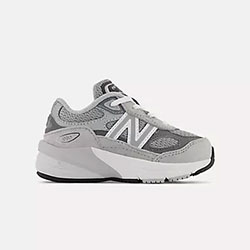

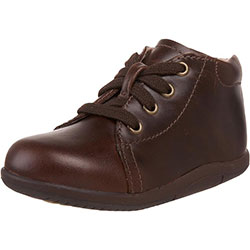

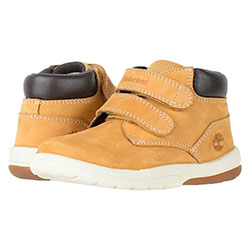
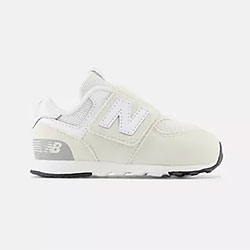
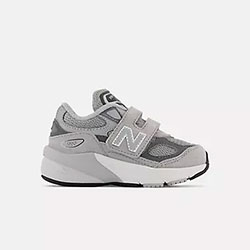

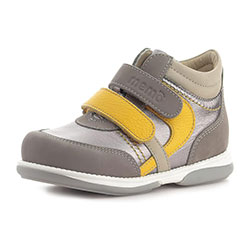
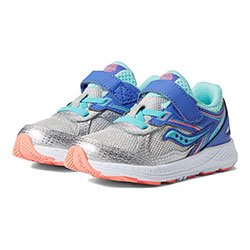
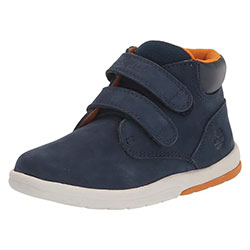
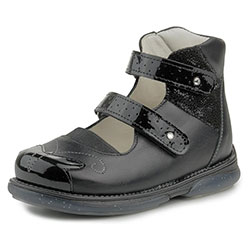




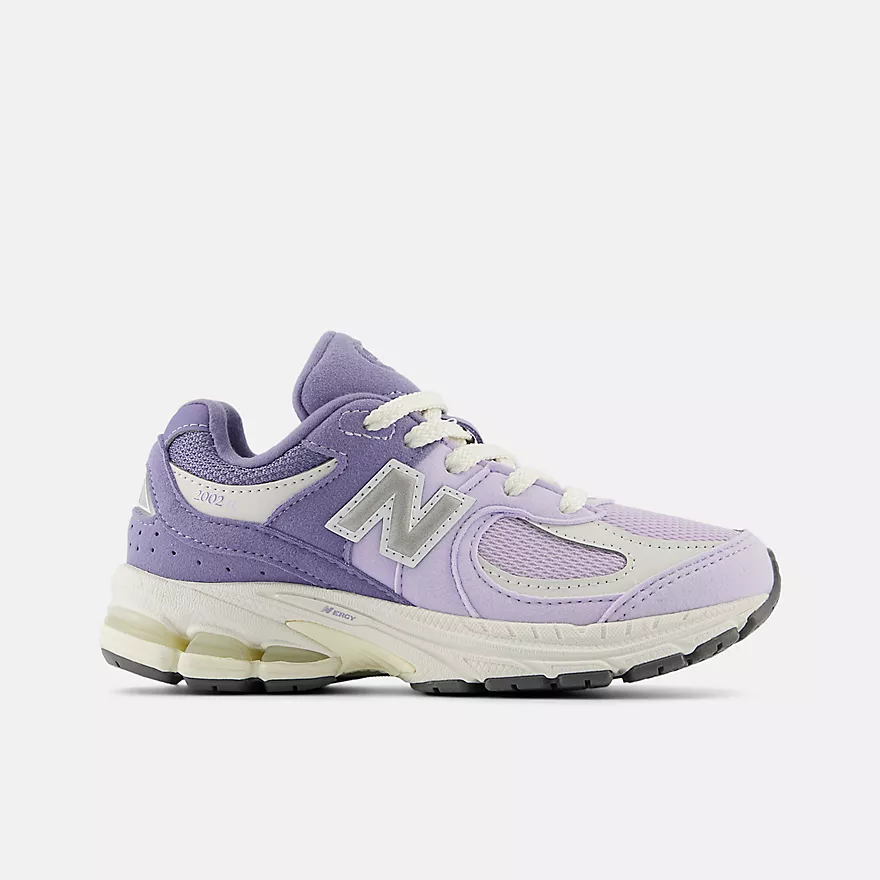
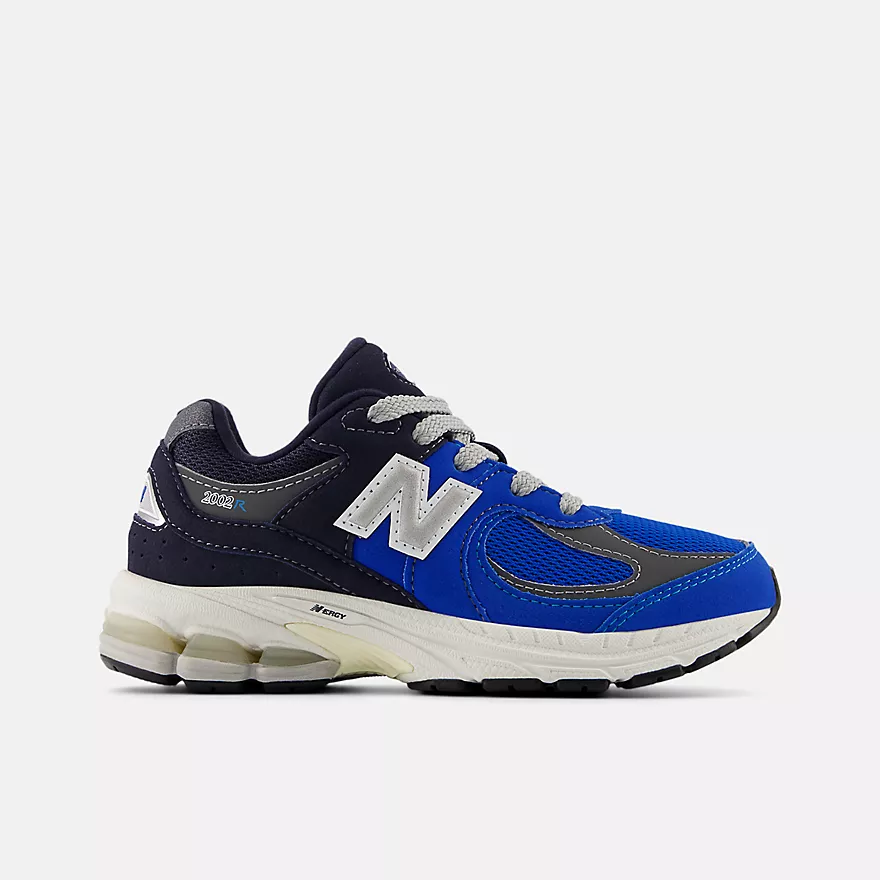

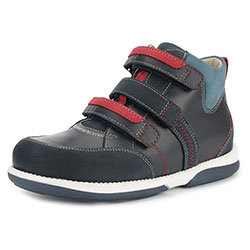
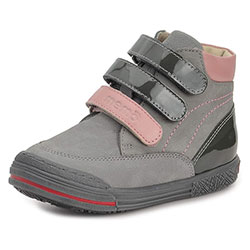
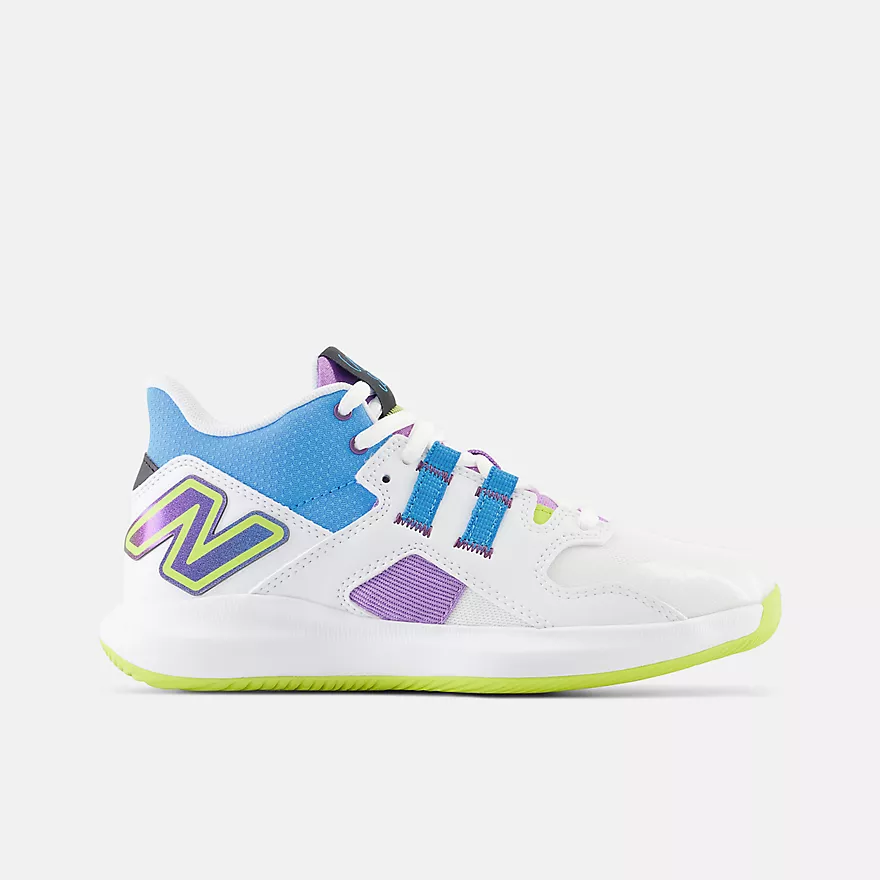
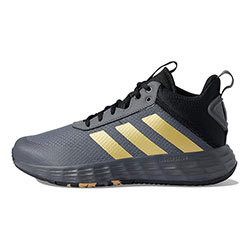
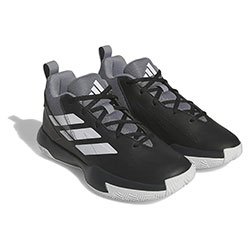







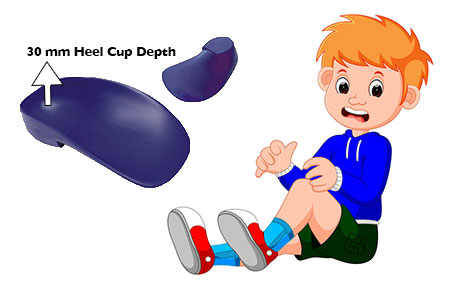
Our daughter is 20 months old and has quite a lot of over-pronation, with her feet rolling inwards. She likes to sit in a W-position and I’ve read on your site how that is a possible indication of weak muscle tone etc. I’ve seen her hold her feet at night, complaining, but since she can’t speak much yet, I’m assuming it hurts a little.
We’re based in Cape Town, South Africa – hopefully we can find some of the shoes you’ve mentioned here too.
My question is, have you seen children grow out of the over-pronation so that they are comfortable to walk barefoot normally after consistently wearing the right shoes that offer support, or will she forever have this problem? My hope is that because she is still young thee muscles will develop correctly if we take action now…?
Hope to hear from you soon – and thank you for sharing your knowledge!
Hello Ayleen,
Children can develop arches until they reach the age of five, so it’s normal for them to undergo a lot of changes between the first and fifth year. The correct types of shoes might not fix your daughter’s foot problem. For example, if your child is flat footed, the shoes won’t mold your child an arch. However, the correct types of shoes can help improve her foot posture, walking gait, stability, and allow her child to perform her daily activities without pain.
Hi,
My daughter has hyper mobile feet that are narrow. She wears orthodonics and was fitted for a pair of Asics for the extra support. We need to find a wellington boots for her for outside and I was wondering if you have any recommendations. She is wearing a UK13
Hello Elizabeth,
Are you located in the United States or the United Kingdom?
Hi my son has recently been diagnosed with hyper mobility and needs to start wearing orthotics abit more everyday. What would the best shoes be for him to wear? Any help would be grateful.
Hello Symone,
It’s hard for me to recommend shoes for your son without knowing your son’s exact foot shape —narrow, medium, wide, extra wide, high instep. If you are unsure of your son’s foot shape please follow the instructions on this article:
How to Measure Your Kids’ Foot – 2 Simple Steps to Determine Foot Length and Foot Width
My daughter likely has EDS Hypermobility. Her ankles roll inwards and she has knocked knees. She just started kindergarten and is required to wear Mary Janes, Oxford, or T-Strap shoes with her uniform. Please help if you have any recommendations.
Hello Amanda,
There is a particular Mary Jane that comes with a substantial sole and it’s deep enough to fit an orthotic in case you have to. Please find below my recommendation:
Supportive Mary Jane
Are your daughter’s feet narrow, medium, wide, or extra wide? Is your daughter currently wearing an orthotic?